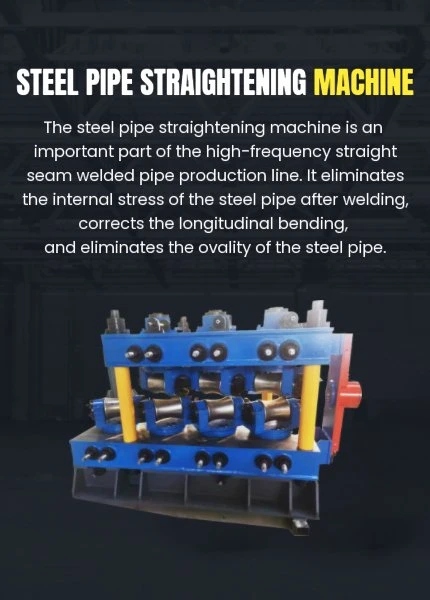stainless steel pipe making machine
The Production of Stainless Steel Pipe Making Machines
Stainless steel has become an essential material in various industrial applications due to its corrosion resistance, strength, and aesthetic appeal. The production of stainless steel pipes is a process that requires precision engineering and advanced manufacturing techniques. At the heart of this process lies the stainless steel pipe making machine. This article will delve into the components, working principles, and significance of these machines in modern manufacturing.
Understanding Stainless Steel Pipe Making Machines
Stainless steel pipe making machines are specialized equipment designed to produce pipes from stainless steel coils or sheets. These machines facilitate the transformation of raw stainless steel into finished pipes that can be used in various applications, including plumbing, structural applications, and the automotive industry. The manufacturing process typically involves several stages forming, welding, sizing, and finishing.
Key Components of the Machine
A stainless steel pipe making machine consists of several critical components
1. Uncoiler This is the first component of the production line. The uncoiler unwinds the stainless steel coil and prepares it for further processing.
2. Forming Section In this section, the flat stainless steel strip is fed into a series of rollers which shape it into a tubular form. The rollers are adjustable to produce different pipe diameters and wall thicknesses.
3. Welding Unit Once the steel strip is formed into a pipe shape, the edges are welded together. Stainless steel pipe making machines typically use high-frequency induction welding or TIG (Tungsten Inert Gas) welding methods. High-frequency welding is favored for its efficiency and strength, ensuring that the welds can withstand high pressures.
4. Sizing Section After welding, the pipe undergoes sizing to achieve the desired diameter and wall thickness. This is conducted through a series of sizing rollers that adjust the dimensions of the pipe through controlled pressure.
stainless steel pipe making machine

5. Cutting Unit Once the pipe reaches the correct length, it is cut into specified lengths for various applications. This unit can be a straight cutting saw or a rotary cutting machine, depending on the desired efficiency and thickness of the pipes.
6. Finishing Section The final stage includes finishing the pipe surface, which may involve processes such as polishing, grinding, or applying coatings to enhance corrosion resistance and aesthetics.
Working Principles
The working principle of a stainless steel pipe making machine is a blend of mechanical engineering and physics. Initially, stainless steel strips are uncoiled and fed through rollers that progressively shape the strips into a tube. The edges of the strip are aligned and then welded using high-frequency current, which generates enough heat to fuse the metal without compromising its structural integrity.
Following the welding process, the pipes are subjected to a sizing operation that ensures uniformity and adherence to specifications. This is crucial in industries where pipe dimensions must meet strict standards for safety and performance.
Importance in Industrial Applications
Stainless steel pipe making machines play a vital role in numerous industries. They provide the means to produce high-quality pipes that are essential for infrastructure development, oil and gas transportation, water supply systems, and many other applications. The durability and corrosion resistance of stainless steel pipes make them particularly desirable in environments where exposure to harsh conditions is common, such as chemical processing plants and marine applications.
Additionally, advancements in technology have allowed for increased automation and efficiency in pipe production, reducing labor costs and enhancing productivity. Manufacturers can now produce custom sizes and designs with minimal lead time, catering to the specific needs of their clients.
Conclusion
In conclusion, stainless steel pipe making machines are a cornerstone of modern manufacturing, enabling the production of high-quality pipes that are crucial across various industries. As technology continues to evolve, these machines will likely incorporate even more sophisticated features, further enhancing their efficiency and versatility. The importance of stainless steel pipes in ensuring safety, reliability, and performance cannot be overstated, making the development and refinement of stainless steel pipe making machines an ongoing priority for manufacturers worldwide.
-
High Frequency Straight Seam Welded Pipe Production Line-BzZhou Xinghua Machinery Equipment Manufacturing Co., LTD.|line pipe steel&welded gas pipeNewsJul.30,2025
-
High Frequency Straight Seam Welded Pipe Production Line-BzZhou Xinghua Machinery Equipment Manufacturing Co., LTD.|High Precision&Automated SolutionsNewsJul.30,2025
-
High Frequency Straight Seam Welded Pipe Production Line - BzZhou Xinghua Machinery Equipment Manufacturing Co., Ltd.NewsJul.30,2025
-
High Frequency Straight Seam Welded Pipe Production Line-BzZhou Xinghua Machinery Equipment Manufacturing Co., LTD.|Precision Welding, High EfficiencyNewsJul.30,2025
-
High Frequency Straight Seam Welded Pipe Production Line|BzZhou Xinghua|Precision Welding&EfficiencyNewsJul.30,2025
-
High Frequency Straight Seam Welded Pipe Production Line - BzZhou Xinghua|Precision Engineering&EfficiencyNewsJul.30,2025


